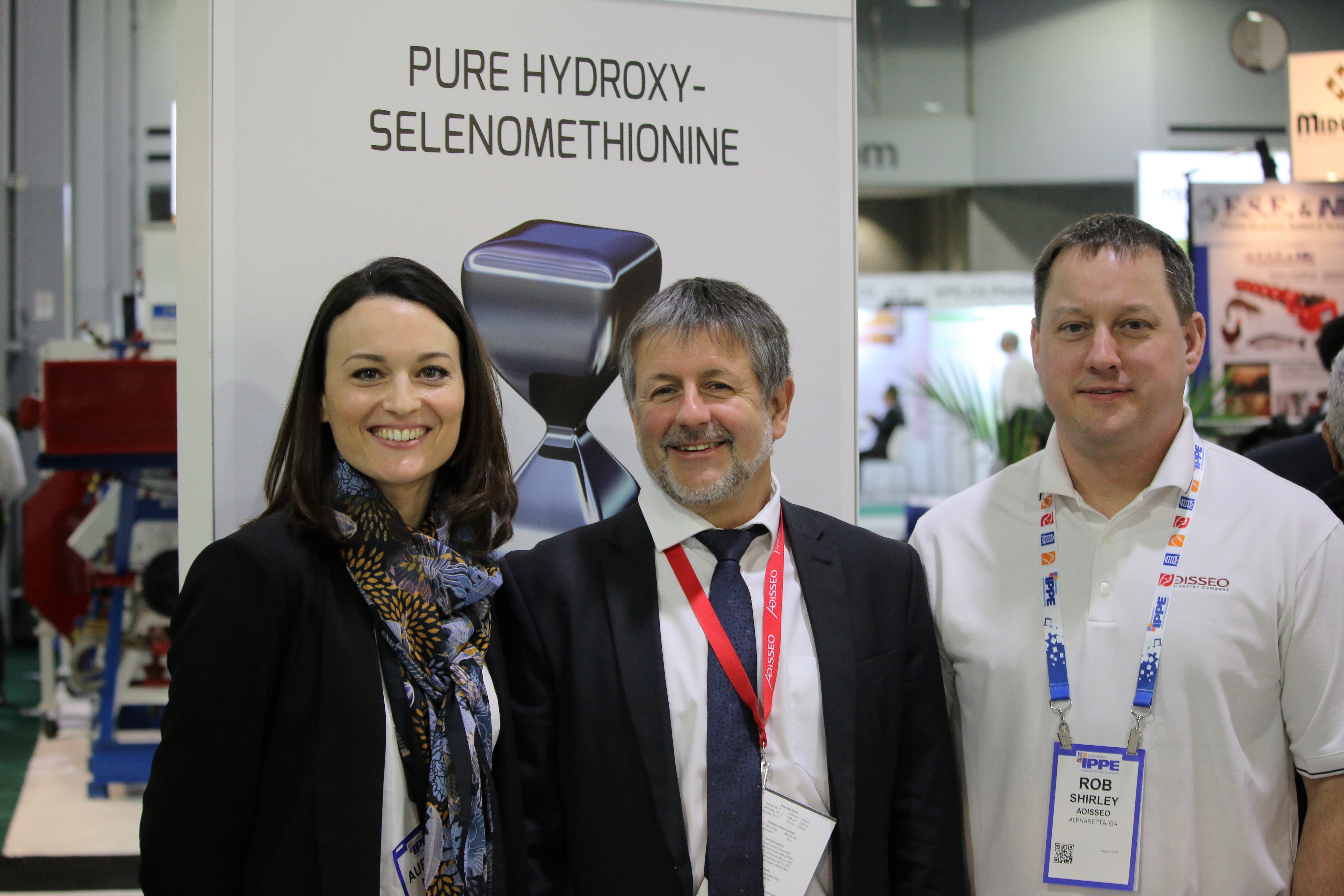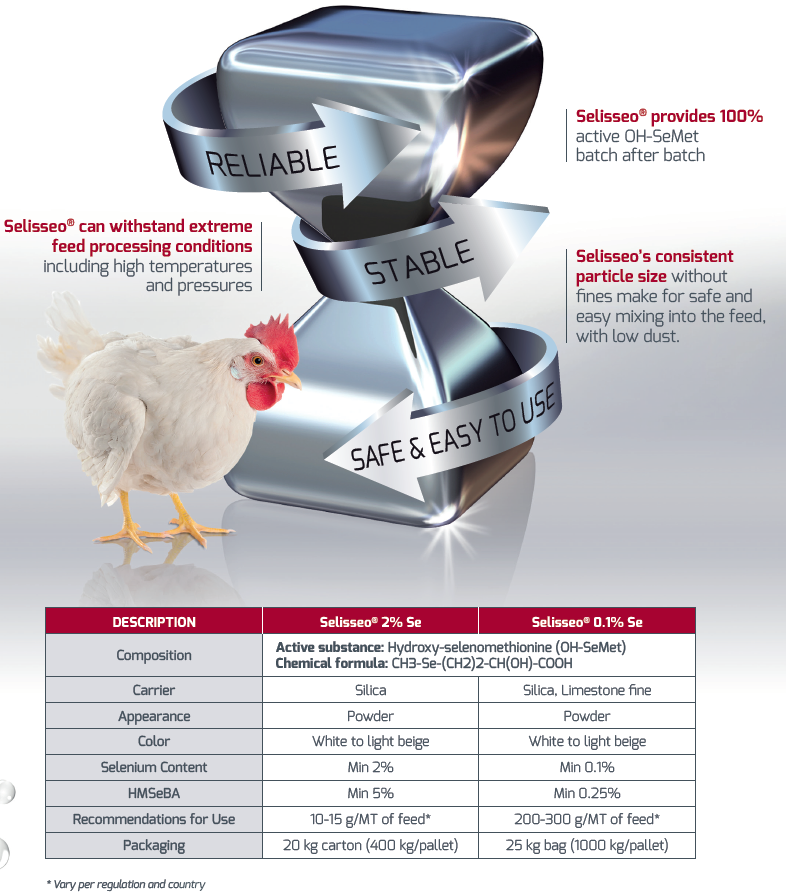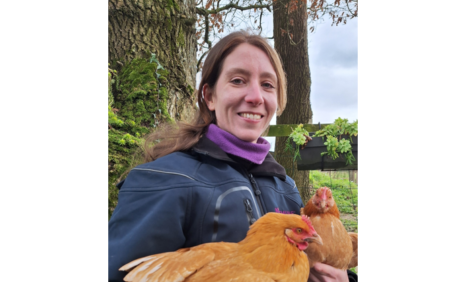



Whole health solutions through nutrition: what's selenium for anyway?
We spoke with Adisseo at IPPE 2019 about their approach to poultry health through nutrition, and why selenium is so important.Speaking with us was Pierre-André Geraert, Adisseo’s director of scientific marketing. In charge of scientific network and innovation marketing, he works to educate clients about the science behind Adisseo’s products and solutions. Also present was Rob Shirley who works in the US-based Poultry Technical Services division who works with producers to understand what their needs are and to relay that back to headquarters, which utilises that research to develop new products.

From left to right: Aurelie Moal, Global Marketing Manager; Dr Pierre-André Geraert, Director of Innovation Marketing; Dr Rob Shirley, Poultry Technical Services
Reducing stress is key to success
Just like in humans, stressful situations create oxidative stress in animals. To reduce the impacts of this on animal health, the body must create antioxidants to mop up free radicals. So, Dr Geraert explained, the first thing you need to improve is the antioxidant capacity of animals. When you do this, free radicals are essentially mopped up or neutralised which helps to prevent tissue damage and, in the case of poultry, optimise performance.
Adisseo’s answer to reducing oxidative stress is their new product, Selisseo. This chemically synthethised, 100 percent pure organic selenium product packs a punch. “Because of its purity,” explained Mr Geraert, “it’s 100 percent reliable.”
A key component of this product for producers and mixers is that Selisseo can withstand extreme processing conditions, including high temperatures and pressures such as during extrusion. “Most organic forms can be damaged by the feed process,” added Dr Geraert, “but our chemical formulation is very stable.”
Dr Geraert explained that it’s not only safe for poultry, but for the humans handling it since it is not a fine dust which can be breathed in, unlike other products.
“It has a lot of possibilities for all species, even fish and ruminants where it can improve the resistance of the animals to oxidative stress. Even for humans!” he said.
Adisseo’s approach to improving animal health is by optimising animal nutrition, which hearkens back to Hippocrates, a physician in ancient Greece and one of the most influential figures in medical history.
“We use Selisseo to reinforce the natural defences of the animal. And, you know, we need to keep in mind that any stress has an oxidative component. Whatever the stress, whether mycotoxins, heat, or a poor diet, the oxidative component is always increased.
“We use the hour glass shape for Selisseo to show that oxidative stress causes ageing in humans. If you slow down oxidative stress, you slow down time!” said Dr Geraert.

© Adisseo
Supplementing is important in a global industry
The demand for products such as Selisseo is important, not only because reducing oxidative stress will impact performance and the quality of the end product, but because selenium may be depleted in the soil of some countries, such as China and New Zealand.
This means that the cereals grown in soil that has low or no selenium will not contain enough or any trace of this beneficial antioxidant, which in a globally connected industry could have significant impacts on performance from country to country if selenium-deficient cereals are exported from one region as animal feed to another.
Dr Geraert said: “By measuring the amount of selenium in a chicken’s tissues or feathers, you can approximate where that chicken was raised. We have developed a system where the end user can send a few feathers in an envelop that goes to an independent lab, and the lab has a process to measure the selenium.
“This gives added value to the producer or integrator.”
Dr Geraert said that demand for Selisseo has continued to grow over five years, which shows that it has had a positive and practical impact, such as improving egg shell quality and the shelf life of meat.
“We developed a study on the colour change of meat with a customer. We showed that you could slow down the change in colour of meat from chickens that had been supplemented with our pure organic selenium.”
Looking ahead
A key point for Adisseo now is to support their customers in meeting consumer demands for meat that is sustainable, high welfare and has a low carbon footprint.
They are also looking very forward to appropriating the Nutriad products as a result of Adisseo’s acquisition of the company in 2018. Rob Shirley said the mycotoxin binders and butyrate are particularly exciting additions. “We’re looking at nutrition in a global way instead of just saying, ‘here you go, have this product, why don’t you try this or that.’ We want to develop synergies between them so that the consumer gets the best possible nutrition solution for their animals.” said Dr Shirley.
When asked about future innovations, Dr Geraert said that Adisseo is looking forward to helping their end users with an enlarged portfolio of products to help them with certain specific goals such as reducing feed costs, improving sustainability, enhancing product quality and replacing medication.










